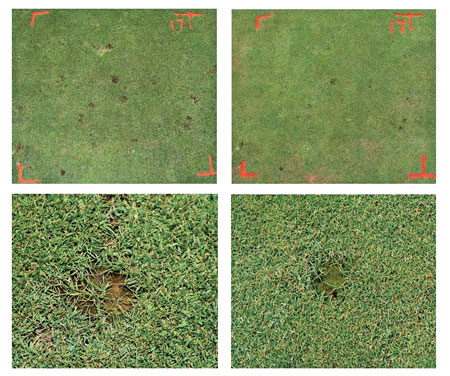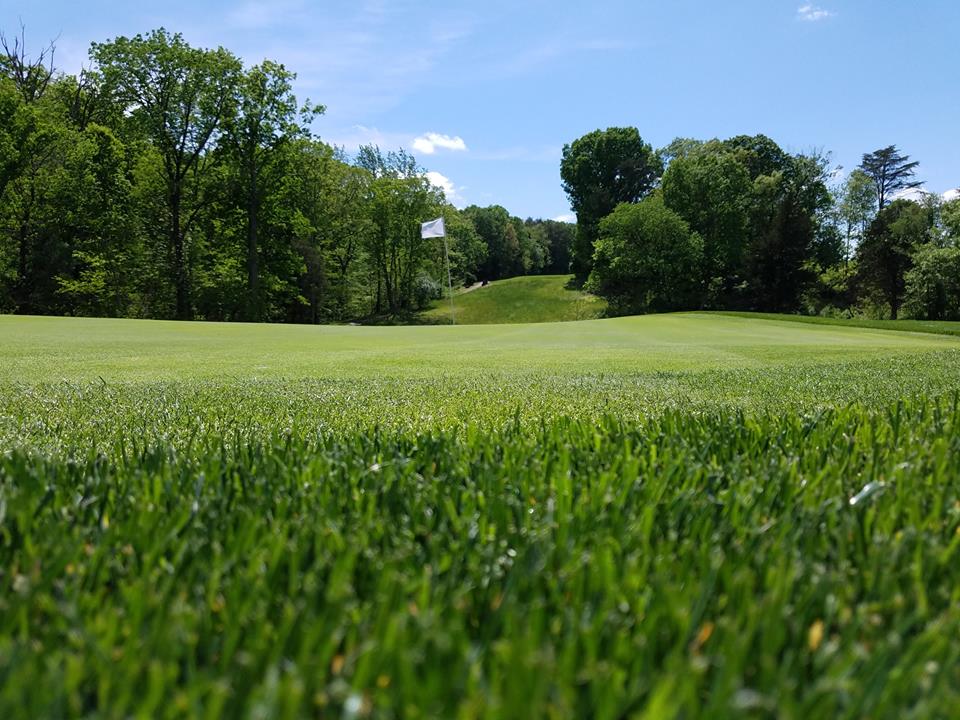Controlling silvery-thread moss with Quicksilver

Left: Research plot (above) and STM colony (below) two weeks after treatment with Quicksilver. Right: Research plot (above) and STM colony (below) six weeks after treatment with Quicksilver. Photo by: Cole Thompson, Ph.D.
Silvery-thread moss (STM) (Bryum argenteum Hedw.) continues to trouble superintendents managing creeping bentgrass (Agrostis stolonifera L.) and annual bluegrass (Poa annua L.) putting greens. Extremely small asexual propagules make STM an invasive and resilient weed that often requires the integration of both cultural and chemical strategies to obtain acceptable levels of control.
Quicksilver (carfentrazone-ethyl) currently is the most effective and widely used product for STM control, but likely is only effective on actively photosynthesizing portions of plants concentrated at growing tips. In the weeks following an application of Quicksilver, superintendents often observe significant STM recovery from surviving structures. For STM control, Quicksilver’s label suggests making two sequential applications two weeks apart at 6.7 fl. oz./acre. If moss recovery occurs in the weeks following the initial applications, follow-up applications can be applied every two weeks at 2.0 to 6.7 fl. oz./acre as needed.
This wide range piqued our curiosity, so we devised several studies to determine how differing Quicksilver rates would affect STM growth.
Currently, field studies at Kansas State and California Polytechnic State Universities are under way to complement previous greenhouse investigations and observe the potential recovery of STM following a single application of Quicksilver at various rates. Field experiments were initiated in June 2015 in Manhattan, Kan., and San Luis Obispo, Calif., on natural infestations of STM at each site. Following initial STM coverage ratings, research plots were treated with Quicksilver at 1.7, 3.4, 6.7 or 13.4 fl. oz./acre or left untreated. Recovery of STM was then monitored weekly for six weeks after treatment to discern potential differences among application rates.
Results from this study will help superintendents select an appropriate and efficient rate of Quicksilver as part of an integrated STM control program.
Cole Thompson, Ph.D., California Polytechnic State University-San Luis Obispo, Steve Keeley, Ph.D., Kansas State University and Zane Raudenbush, Ph.D., Kansas State University.










